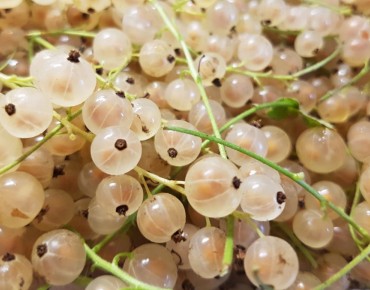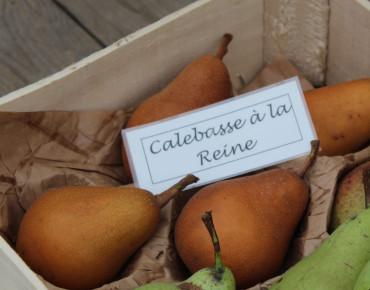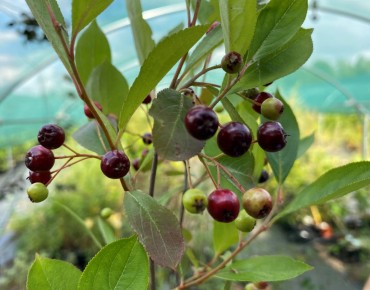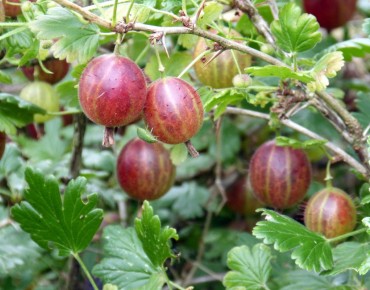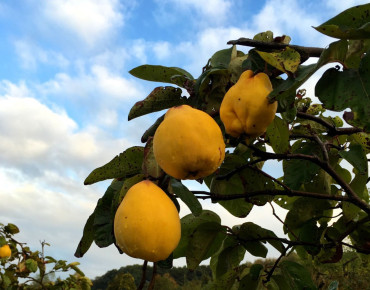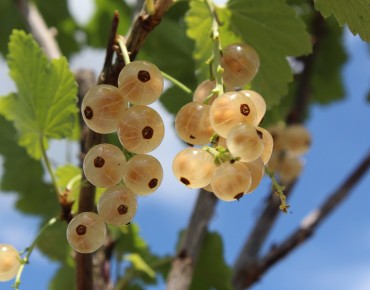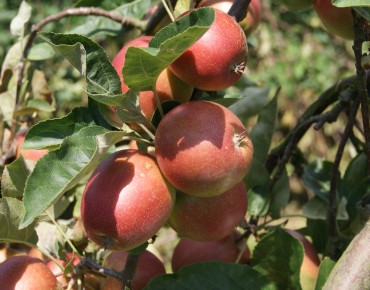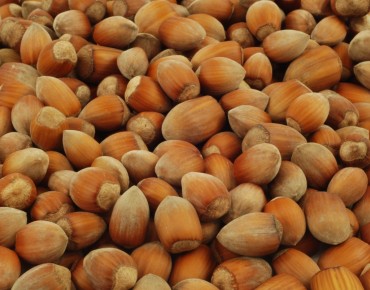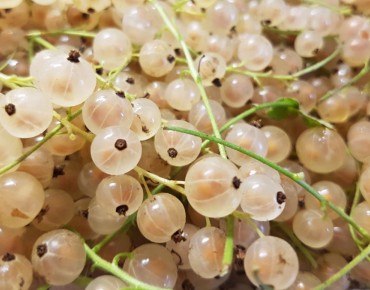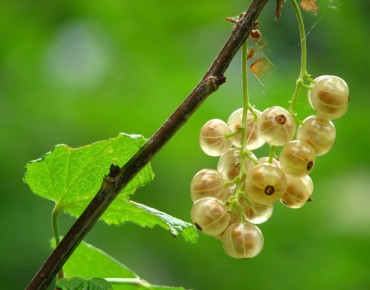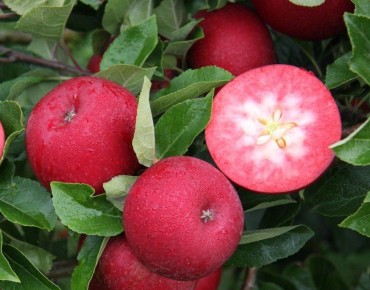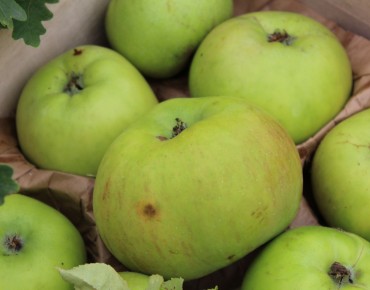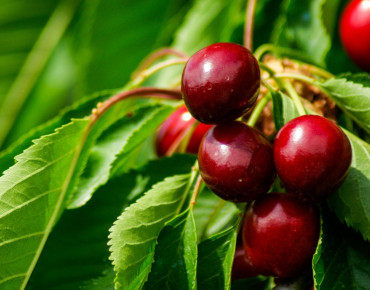- novelty
Golden Delicious apple tree
Malus domestica 'Golden Delicious'
Description
Apple Tree Golden Delicious – Malus domestica 'Golden Delicious'
Main highlight
The 'Golden Delicious' apple tree is one of the most famous and widely grown apple varieties in the world, appreciated for its golden yellow fruits, sweet, melting flesh, and long shelf life. Originating in the United States in the early 20th century, this cultivar has proven itself in both home orchards and professional settings. Its consistent yield, moderate growth habit, abundant flowering and decent disease resistance make it a reliable and generous choice. It bears fruit early, responds well to pruning and can be trained as a goblet or espalier. The apple is crisp when first ripe, then softens over time, developing aromas of honey and pear.
Origin and characteristics
Geographical origin: West Virginia (USA), around 1890.
Botanical family: Rosaceae
Features: Iconic variety, parent of many modern hybrids. Good storage capacity, vigorous growth and excellent productivity.
Description and characteristics
Adult height: 2.5 to 3 m (grafted on dwarfing rootstock)
Adult width: 2 to 3 m
Habit (form): Semi-upright, rounded and balanced
Bark: Grey, slightly rough with age
Foliage: Deciduous, light to medium green, oval, finely toothed
Growth: Moderately vigorous, early fruiting (from 2nd or 3rd year)
Hardiness: Good, down to −20 °C
Flowering and fruiting
Flowering period: April (mid-season)
Flower description: White flowers tinged with pink, simple and fragrant, very nectar-rich
Fruits: Large size, elongated shape, smooth golden yellow skin, sometimes russeted in sunlight. Creamy white flesh, fine, juicy, sweet, low in acidity. Harvest: September–October. Storage: 4 to 6 months in a cellar or fridge
Pollinators: 'Elstar', 'Granny Smith', 'Idared', 'Reine des Reinettes', 'Transparente de Croncels', 'Transparente Blanche', 'Melrose', 'Jonathan'
Pollinator and wildlife value: Flowers highly attractive to bees, fruits eaten by blackbirds and rodents
Light and soil
Ideal exposure: Full sun
Soil type: Deep, fertile, moist but well-drained. Slightly acidic to neutral
Planting
Soil preparation: Add well-decomposed compost. Loosen soil to 40 cm depth. Plant outside frost periods from November to March, or year-round if in containers.
Planting distance: 4 to 5 m for standard trees, 3 to 4 m for half-standard or dwarf
Soil nature: Humus-rich, deep, no stagnant water
Watering
Needs at planting: Regular watering during the first 2 years
Mature tree needs: Moderate. Mulching helpful in summer
Pruning
When and how to prune:
- Formative pruning (young tree): Shape into goblet or central leader. Remove competing shoots, select 3 to 5 well-spaced main branches.
- Maintenance pruning (mature tree): Winter pruning (January–February). Remove dead wood, inward-growing shoots, suckers and water sprouts. Promote horizontal fruit-bearing branches.
- Fruiting pruning: Thin flower clusters to open up the canopy and regulate production.
- Avoid overly severe pruning, which encourages wood rather than fruit.
Propagation
Propagation method: Grafting (cleft or whip-and-tongue) on MM111, M9 or M26
Use in the garden
Ideal setting: Home orchards, cottage gardens, fruit tree alleys
Recommended companion plants: Lavender, marigold, comfrey, allium, borage – natural protection and pollination
Traditional uses
Uses: Fresh eating, pies, compotes, juice, dried fruit
Problems and diseases
Possible sensitivities: Apple scab (in persistent humidity), powdery mildew, aphids
Treatments and prevention: Sprays with clay or horsetail decoctions. Airy pruning. Partially resistant variety
Cultivation tips
Practical advice: Install permanent mulch, prune regularly, plant pollinator-friendly companions. Avoid excess nitrogen.
Cultivar distinctions
Very sweet, aromatic apple with long shelf life, suitable for both cooking and fresh eating. Widely grown commercially, but still highly valuable to home gardeners for its productivity and generosity.
Features
- Common name : Golden Delicious apple tree
- Family : Rosaceae
- Category : grafted low stem fruit tree
- Spread : 2 to 3 m
- Foliage : deciduous
- Color of flowers : Pinkish white
- Fruit : Large, elongated apples with smooth, golden-yellow skin, sometimes turning reddish in the sun. Creamy-white flesh, delicate, juicy, sweet, and slightly acidic.
- Harvest : September-October
- Use : isolated - orchard
- Soil : all
- Habit : Rounded
- Enemies : aphids - caterpillars
- Possible diseases : Scab - powdery mildew, partially resistant variety
- rootstock : MM111
- Pollinator : Elstar, Granny Smith, Idared, Reine des Reinettes, Transparente de Croncels, Transparente Blanche, Melrose, Jonathan
Expédition & livraison
How does the delivery work?
 As soon as you place your order your plants are selected
As soon as you place your order your plants are selected Each order is processed individually.
Each order is processed individually. Plants are packed, staked and labeled.
Plants are packed, staked and labeled. Packaging is carefully implemented to avoid any problems.
Packaging is carefully implemented to avoid any problems. Packages are ready to be shipped.
Packages are ready to be shipped.
Our delivery methods
Shipping of our plants throughout Europe (except overseas and islands).
Customer reviews








